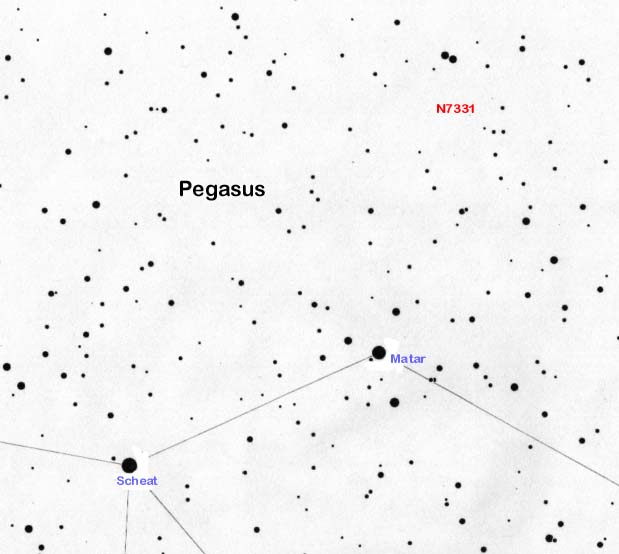![]()
![]()
One of the challenges facing a visual observer is that we have no way of determining how far away objects are. We see galaxies of various sizes and brightnesses but have no way of relating these objects to each other unless we are able to assign distances. There is a way around this problem. Radial velocity measurements can be used to estimate a galaxy's distance. Take NGC 7331, for example. Its radial velocity is 835 km per second. If one assumes a Hubble constant of 65 km per second per megaparsec, that puts NGC 7331 at a distance of about 42 million light-years. That's about 19-times the distance to M31. If you compare the apparent sizes of the two galaxies and adjust for distance, NGC 7331 is M31's twin. But for a few million light-years separation, NGC 7331 would be known as the Pegasus Galaxy.
Begin your star hop to NGC 7331 at 2.4 magnitude Scheat, the star marking the northwest corner of the Great Square asterism. Slew 5 degrees to the northwest and 2.9 magnitude Matar. Offset Matar 1 degree east of center in the finder scope. Now, slew due north about 4 degrees. You should run smack dab into NGC 7331. Note the close pair of 6th magnitude stars about a degree north of NGC 7331. Use this double as the northern boundary of your search.
| Autumn Sky Tour: NGC 7331 (Pegasus) RA: 22h 37.1m / DEC: +34° 25'.0 |

|
|
| Autumn Sky Tour: Stephan's Quintet (Pegasus) RA: 22h 36.0m / DEC: +33° 57'.9 |

|
|

Home | About Cosmic Voyage | Getting Started | Deep-sky Observing | Planetary Observing | Astrophotography | Sketching | Glossary | Web Links
URL: http://www.cosmicvoyage.net
Layout, design & revisions © W. D. Ferris
Comments and Suggestions: wdferris1@gmail.com
Revised: March 11, 2002 [WDF]